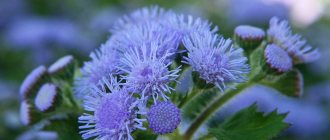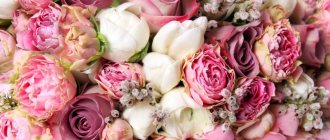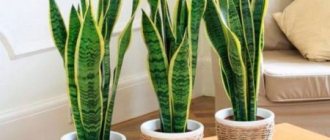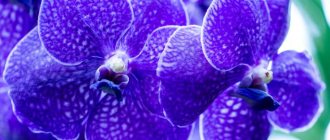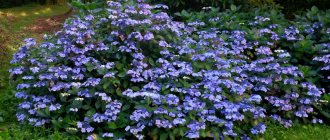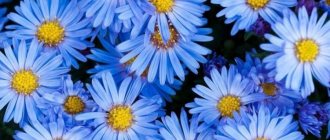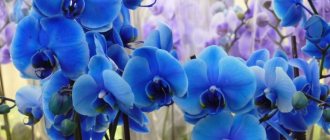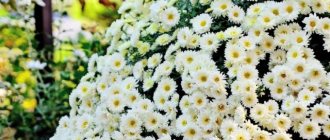What do we call forget-me-nots? Naturally, this list will be headed by the forget-me-not itself (Myosotis), then in addition to it, 2 more genera are most often classified as “forget-me-nots” - Brunnera and Omphalodes, or the spring umbilical cord. Brunnera is affectionately called for its lilac aerial inflorescences forget-me-not, omphalodes for its peculiarity of growth and the color of the petals was nicknamed creeping forget-me-not. All three forget-me-nots were born in forests and bloom at approximately the same time, in May-June.
- Three “main” forget-me-nots 1. PLACE: Forget-me-not, forget-me-not / Myosotis
- 2. PLACE: Brunnera, forget-me-not, Caucasian forget-me-not / Brunnera
- 3rd PLACE: Omphalodes, umbilical cord / Omphalodes
- 4th PLACE: Periwinkle, vinca / Vinca
Forget-me-not flower - description
What kind of eyes are these? Whose are they? Their owner is well known to us under the name “forget-me-not.” A tiny flower, so modest and indecisive that even at the time when the Lord bestowed names on all his subjects, he stood aside and would have remained nameless if the Lord had not called him and said: “I will never forget you, delicate, modest flower. And people will not forget you once they see you. And your name will be “ forget-me-not”
«.
Today, under the common name “forget-me-not” we know several representatives of the borage family. This is the well-known forget-me-not (Myosotis), and flowers similar to it, but distinguished by the large broad-fingered leaves of Brunnera, as well as their friend from the shady forests of the Western Caucasus - Omphalodes.
Main plant types
A brief introduction to popular types of brunera for growing in a summer cottage.
Brunnera sibirica
The owner of flowers of a bright blue hue. With insufficient care, this variety can form entire thickets. Siberian brunnera blooms in late May, early June.
Brunner Variegat
The lowest flower. An adult plant is only thirty or thirty-five centimeters tall. The edges of the leaves of this variety are colored beige.
Brunner Jack Frost
The most unusual of the species. Brunner's entire body, as if covered with ice, is endowed with a whitish tint. It is important to remember that this variety requires special care and constant spraying. Otherwise, the plant will lose its saturation and wilt.
Brunnera macrofolia
A distinctive feature is that the front side of the leaf is dark green in color, and the back is gray. The plate itself has a rough surface. Very often, this variety is also called “Caucasian forget-me-not”. The brunera macrofolia flower has a beautiful appearance that lasts for three weeks.
Brunner Alexanders Great
The leaves are silver-gray with greenish veins. An adult plant reaches a height of up to sixty centimeters. This variety loves moisture very much. The ideal planting location is a shady or semi-shady area.
Differences between forget-me-nots and brunnera and omphalodes
The main biological difference between forget-me-not and brunnera and omphalodes is that forget-me-not is a biennial, using mainly seed propagation, while brunnera and omphalodes are perennials that practically do not set seeds and reproduce by dividing the rhizome.
The flowering of the beautiful forget-me-not begins at the end of April and lasts more than a month until the beginning of June. During July, the seeds ripen and self-sow, which germinate very quickly - so that by mid-August, dozens of tiny young bushes are already showing off next to the mother plant. They will bloom only next spring, when the mother plant has already died, thereby completing the two-year life cycle of each forget-me-not. Garden forget-me-not is much more tender than its forest sister, although in comparison with other garden biennials it can be considered perhaps the most undemanding and unpretentious crop. It will bloom and develop equally well both in the shade and in sunny areas. Even the short-term drying out of the soil in spring, which occurs between the melting of snow and the first thunderstorms in May, is tolerated very easily by forget-me-nots. It is not afraid of short-term frosts on the soil down to -5°C.
Landscape design
Plants blooming in spring with beautiful leaves can decorate rock gardens, alpine slides and paths. They go well with mountain weed, juniper, ferns, and wild garlic. In mixboxers, Brunnera will benefit from flowering tall perennials.
If there is a pond on the site, you can plant a lush bush near it and the shore will turn out airy green.
This easy-to-care plant can be planted in almost any area of the garden, which it will decorate in the spring with its flowering, and in the summer with beautiful green or multi-colored leaves.
Brunnera plant
Growing forget-me-nots
types of forget-me-nots grown in culture.
(Myosotis) - marsh forget-me-not (Myosotis palustis) and forest forget-me-not (Myosotis sylvatica).
Swamp forget-me-not (Myosotis palustis)
- has the largest bright blue flowers among forget-me-nots, reaching 1.2 cm in diameter, and very strong and shaggy stems up to 40-50 cm long. Its bright green leaves match the overall appearance of the plant and reach 8 cm in length and 2 cm in width. Forget-me-not marsh prefers damp and shady places, so it is most often used to decorate the banks of decorative reservoirs.
Forest forget-me-not (Myosotis sylvatica)
- differs from swamp forget-me-not in darker blue flowers, not exceeding 1 cm in diameter, and very weak and long (up to 40 cm in length) stems and thin branched rhizomes, located under the very surface of the soil and growing slightly obliquely, even sometimes protruding above the level earth. The leaves of the forest forget-me-not are wide, dark green, overwintering, oval in shape and located along the entire length of the stem. Unlike the swamp forget-me-not, the forest forget-me-not is a less moisture-loving plant, so it is successfully used to decorate flower beds next to tulips.
Very similar to its blue-eyed friend, but different from it with large heart-shaped leaves, Brunnera - it came to our region from the damp, shady forests of the Caucasus and Southern Siberia. This is a luxurious perennial, represented in cultivation by two species - large-leaved Brunnera (Brunnera macropylla) and Siberian Brunnera (Brunnera sibirica). It is incredibly resistant to all the vagaries of freezing Russian winters, and does not require any soil preparation for planting or special care. It is enough to plant Brunnera rhizomes once in late July-August in a shaded and moist area of the garden - and next spring its curious blue eyes will greet you, creating an indescribable feeling of a whole sea of heavenly drops that unexpectedly fell on the earth waking up from a long winter sleep. Without replanting, a brunnera bush can exist for more than ten years, gradually growing and turning the area allocated for it into a real blue sea. Even after the end of flowering, which lasts about a month, the large, lush green leaves of Brunnera form a beautiful carpet that suppresses the growth of weeds and turns even the most abandoned and unsightly areas of the garden into cozy flower beds. When grown on waterlogged soils and areas of land exposed to constant winds, as well as in rainy years, Brunnera is damaged by brown spot - a fungal disease carried by the wind and primarily damaging weakened plants growing outside favorable conditions. To combat this disease, all affected above-ground parts of the plant should be removed, and healthy plants should be treated with a fungicide solution. And another representative of the wonderful blue-eyed family is Omphalodes. It is represented in culture by two of the most popular species - Omphalodes cappadocia (Omphalodes cappadocia) and spring Omphalodes (Omphalodes verna). Growing in its natural areas, Omphalodes cappadocia already in April-May covers the harsh rocky gorges of the Western Caucasus with its amazing pale blue flowers. However, in the conditions of Central Russia, the flowering of omphalodes becomes very scarce, seeds practically do not set, and from a perennial plant, omphalodes turns into an annual. Therefore, its cultivation does not cause much enthusiasm among amateur gardeners. However, its “namesake” is Omphalodes verna.
- has gained well-deserved popularity not only among flower growers of the Middle Zone, but also on European lawns and flower beds. Its bright blue flowers, larger than those of the forget-me-not, reaching 0.8-1 cm in diameter, cover flower beds and ceremonial flower beds and even entire terraces with a real carpet thanks to a distinctive feature of Omphalodes - vegetative growth. Omphalodes vernalis is extremely resistant to almost any unfavorable conditions - both cold winters and summer drought. It is not damaged by diseases or pests and the only condition for its successful cultivation is the selection of a well-drained site. And finally, let's talk about one more wonderful feature of all representatives of the blue-eyed family - their excellent resistance to cutting. Once cut and placed in wide pots with cool, clean water, forget-me-nots, brunners, and omphalodes can last for about a month. More and more blossoming flowers will replace their fading counterparts, filling the room with the most delicate radiance and creating the sensation of a huge drop rolling down a fantastic leaf from the azure skies straight to your room. And even despite the bright sun blazing outside the window, your home will always be cool and fresh thanks to these delicate flowers, so pure, naive and infinitely sincere - after all, these are real drops of heaven that fell to the ground.
Planting in open ground
Hydrangea large-leaved or broad-leaved - planting and care in open ground
You can meet variegated Brunnera in natural conditions in forests. The plant often grows in damp places and shaded areas. You should definitely pay attention to such features when choosing a landing site. Planting takes place from late July to early August.
Note! When planting in spring, infection with diseases is possible. After winter, you can only replant large-leaved Brunnera, and then only with a large lump of earth. The best time to transplant is morning or evening.
What is needed for planting
To plant forget-me-not brunners, you need to choose the right soil. For the Siberian species, heavy, moist and clayey soil is more suitable, and for large-leaved species, loose and fertile soil is more suitable.
Choosing the optimal location
To provide the shrub with conditions close to natural in the garden plot, it is necessary to choose the right place. Direct sunlight can lead to the death of the plant, so it is best to plant it in the shade or near a pond. It should be borne in mind that excessive shade is also detrimental to the plant, so the best option is to plant the flower in partial shade.
Important! Experts do not recommend planting two different varieties of brunella next to each other, as this will make caring for the plant much more difficult.
Since Brunnera is a moisture-loving plant, this specificity must be taken into account when planting.
Even a novice gardener can plant and care for brunnera.
Step by step planting process
For a flower such as brunera, planting and care must be carried out correctly. Only in this case the plant will delight you with its attractive appearance. As a rule, planting coincides with the separation process. To do this you need to do the following:
- As soon as the bush has completely faded, you need to carefully cut off the entire above-ground part, leaving 10 cm of shoots.
- Then the plant is dug up, the roots are cleared of soil and washed.
- The bush is divided into several parts.
- The holes for planting are prepared in advance, a young plant is planted in them, sprinkled with soil and watered abundantly with water.
Note! When planted correctly, the root collar of the plant should be level with the surface of the ground.
Galanthus plicatus – spring whiteflower (Leucojum vernum)
A great pair of snowdrops. Both plants are so good that difficulties arise when choosing a favorite, but His Majesty chance often comes to the rescue: I have a real folded galanthus growing in my dacha, and I did not plant or sow this Red Book species.
Galanthus foldata, photo by the author. Spring whiteflower
Let me remind you that galanthus love places with light to medium shade, fairly fertile, non-moist soil. If you have a waterlogged area, then it is better to opt for white flowers.
Bruner in the garden, or a story about those who are able to keep her company
Perennial brunera is an excellent option for landscaping complex areas of the garden, as well as creating a true miracle near a barbecue area, pool or gazebo. To do this, it is enough to select interesting plants to accompany the brunera, with which she will be happy to be in the vicinity.
Such plants can be:
- periwinkle, low-growing salvia, ranunculus - on the first line;
- some of the perennials, the height of which will not reach 30 cm. An excellent option are tulips, lilies of the valley and even snowdrops, which are well suited to a semi-shaded and humid place;
- tea or climbing roses in the background. The greenery of brunera and roses will create a unified palette, but the flowers will delight with contrast.
Creating landscape design in a certain style is a delicate and multifaceted matter. But in a few years you can create a real natural masterpiece on your site, consisting of annual flowers and perennial plants, shrubs and low-growing trees, even large ones. Why not?
And later, while enjoying your holiday in the garden, you will remember that it all started with a forget-me-not. A flower-shrub that I liked for its foliage shades and cute flowers.
Iris – Xiphium
When I first saw xyphiums from afar, I mistook them for irises.
Hybrid iris 'Aura Light', photo by the author. Xifium, photo by the author
Upon closer acquaintance with xyphiums, it is clear that, despite the relationship with varietal bearded irises, these are different plants. Moreover, the differences begin from the underground part: irises are rhizomatous, and xyphiums are bulbous.
You can find a large assortment of bearded irises in our catalog, which combines offers from various gardening online stores. View a selection of irises:
Seed price
Several decades ago, in our country, all cultivated large-leaved varieties of this plant were bred exclusively abroad. And the cost of planting material for Russian residents was obscenely high - it seemed fantastic, even cosmic. Now the situation has changed, because the price of brunners today has long been the most affordable, on earth.
To find the Siberian variety, you don’t have to work hard at all; just ask your friends, amateur gardeners, and neighbors in your dacha. And there will definitely be people willing to help (possibly for free). Seedlings of other common ornamental varieties can be found via the Internet, paying somewhere in the range of 500-700 rubles. Sometimes planting material is sent in packages.
For some time before the favorable time for planting, it can be stored by placing it in the refrigerator. But as for interesting and rare varieties, it is difficult to find and purchase them even now, so sometimes you have to work hard and overpay. But even in the case of successful searches, there are no guarantees of success. Such runners often wither and die. But sometimes you have to take risks. After all, there are examples of successful attempts.
Hybrid crocus (Crocus x hybridus) – magnificent crocus (Colchicum speciosum)
The classic similarity of these bulbous plants often baffles us. And, if you are confused, then look at the background against which these wonderful flowers appeared. If against the backdrop of young green spring grass, then these are crocuses; if among fallen yellow leaves, then these are colchicums.
Crocus hybrid. Beautiful colchicum, photo by the author
It is the crocus that opens the March ball of spring primroses at the dachas. Its funnel-shaped flowers of white, yellow, and purple colors appear from the ground quickly, as if by magic. Spring especially welcomes him for his beauty, love of life, and passion.
Crocuses and colchicums, photo by the author
And when the summer colors of the flowers in the dacha fade, then from the ground on translucent pale legs, fragile pale pink flowers of autumn crocus (Colchicum autumnale) or large lilac-pink flowers with a white center suddenly appear. magnificent (C. speciosum). Colchicums are very similar to crocuses, which is why it seems that spring comes with them into the autumn garden at an inopportune hour.
And different varieties of crocuses can be selected in our catalog, which contains offers from many large garden online stores. View a selection of crocuses:
It is better to place colchicums in places protected from the wind: in rock gardens, along the edges of flower beds, ridges, in mixborders, along paths. They grow in one place for up to 5 years. The distance between plants is 6-10 cm, the corm planting depth is 5-8 cm. They prefer light, permeable, calcareous, fertile soils. In areas with cold winters, shelter is required.
You can find a large assortment of colchicums in our catalog, which contains offers from major online stores of seeds and planting material. View a selection of colchicums:
Coreopsis grandiflora – Cosmos sulphureus
When I first saw the low, compact sulphurous cosmos, I mistook it for coreopsis. The incredible similarity of a perennial plant with an annual plant allowed me to pair them.
Coreopsis grandiflora. Sulfurous space, photo by the author
Both have the same requirements for everything, so they are interchangeable in flower beds. Give them sunny places (both are drought-resistant), fertile soils (they grow and bloom well in our carbonate soils), and are responsive to watering and fertilizing.
And coreopsis seeds can be selected in our catalog, which contains offers from many large garden online stores. View a selection of coreopsis:
Double tulips (Tulipa) – peonies (Paeonia)
If you set the rhythm of this pair of such different flower crops on a long ridge, you may not even notice how peonies will bloom to replace the tulips.
Garden tulip variety 'Montreux', photo by the author. Terry peonies
And only the yellowing leaves of the bulbous plants will make it clear that the finest hour of the favorites of May has passed, and they have been replaced by the pompous fragrant favorites of June - peonies. The advantage of joint plantings of this duo is undeniable: carved flowing peonies cover tulips, which, after flowering, quickly lose their decorative effect.
You can find a large assortment of peony planting material in our catalog, which contains offers from major online stores of seeds and planting material. View a selection of peonies:
Garden canna (Canna) – Basio banana (Musa basjoo)
The similarity between canna and banana is visible to the naked eye, especially if they grow nearby. A real banana-canna grove can be seen in the summer on the southern coast of Crimea, in the park of the Gurzufsky sanatorium.
Try to distinguish canna and banana when planted together, photo by the author
Landscapers have also noticed and are successfully using the amazing similarity of these plants.
Garden canna, photo by the author. Banana Basio, photo by the author
And only during the flowering period can you see the difference.
Canna garden variety 'Sunset Gleam', photo by the author. Banana blossoms, photo by the author.
Undoubtedly, both of these plants are gorgeous tapeworms that look good on their own. In summer (with regular watering and feeding), some varieties of canna can reach the size of bananas - more than 2.5 m in height. A wealth of varieties with purple, yellow-variegated leaves will help create the desired “tropical effect”. For earlier flowering, canna rhizomes are awakened in advance, in February, by planting them in a loose fertile substrate.
You will find an extensive selection of cannas in our catalog of seeds and planting materials, which includes offers from major online gardening stores. View Cannes selection:
Preparing for winter
Varieties of forget-me-nots, which grow beautifully in the wild and have found refuge in the garden by chance or at the will of the owner, do not need any care at all in order to safely survive the winter period. As for large-leaved ornamental, especially rare varieties, the gardener has to work a little hard.
First of all, you need to cut off the leaves, because naturally in the fall they may not die off. This shows the difference between noble varieties and species-specific “mutts”. And it would be very desirable to protect the soil by covering its surface with humus or compost before winter.
the Brunner flower any additional shelter for normal existence in the harsh season, since in most cases it tolerates even the most critical frosts. This is not an obstacle for him to be safely reborn in the spring.
